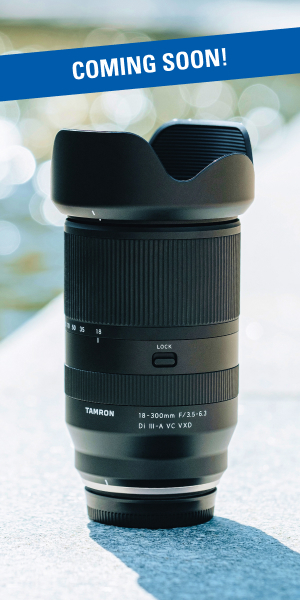On April 8th, 2024, a rare astronomical event will unfold — a total solar eclipse visible across parts of the United States and Canada. For photographers, this presents a once-in-a-lifetime opportunity to capture breathtaking images of the sun’s corona during totality. But how to photograph a solar eclipse safely and successfully? It requires more than just pointing your camera at the sky. From choosing the right gear to mastering your camera settings, preparation is everything. Whether you’re a seasoned pro or a hobbyist, this guide will walk you through the essentials to help you make the most of this extraordinary moment.
What You’ll Learn in This Article
- How to choose the best location using eclipse path maps
- The importance of proper eye and lens protection
- How to set up your gear for eclipse photography
- Recommended Tamron lenses for capturing stunning eclipse images
- Must-have accessories like filters, tripods, and cable releases
- Ideal camera settings for totality and partial phases
- Tips for planning, practicing, and getting the shot
Image by Tamron Ambassador Ian Plant
Plan Your Location
One of the first and most important steps in photographing a solar eclipse is choosing the right location. You’ll want to be in the path of totality to experience the full effect. Use a solar eclipse 2024 path of totality interactive map to pinpoint ideal viewing areas.
How to Photograph a Solar Eclipse – Consider these factors:
- Clear weather forecasts
- Unobstructed views (no buildings, trees, or mountains blocking the sky)
- Accessibility and safety of the site
- Availability of accommodations (many are already booked—consider RVs or camping)
Use Proper Eye and Camera Lens Protection
Safety is non-negotiable. Looking directly at the sun without proper protection can cause permanent eye damage. Here’s what you need:
- Certified solar eclipse glasses for your eyes
- A solar eclipse filter for your camera lens to protect your gear and sensor
Never attempt to photograph the sun without a filter during the partial phases. Only during totality — when the sun is completely covered — is it safe to remove the filter briefly.
Arrive Early and Set Up Properly
To ensure a smooth shoot, arrive early and allow time to:
- Set up your tripod and camera
- Mount filters and accessories
- Practice assembling and aligning your gear
- Test your camera settings in advance
The eclipse moves quickly. Being fully prepared will give you more time to focus on capturing great shots.
How to Photograph a Solar Eclipse: Choosing the Best Lens for the Job

Selecting the right lens is crucial for capturing the total eclipse effectively. A telephoto lens is essential for framing the sun tightly and capturing the delicate structure of the corona. Lenses in the 200mm–600mm range are ideal for solar eclipse photography.
Recommended Tamron Lenses
Here are Tamron’s top lens picks for capturing the 2024 solar eclipse, based on focal length, quality, and system compatibility:
50-400mm F/4.5-6.3 Di III VC VXD (Model A067)
- For Sony E and Nikon Z mirrorless cameras
- Covers 50mm wide-angle to 400mm telephoto — great for capturing both the eclipse and the surrounding festivities
- Use a Ø67 solar eclipse filter
- Turn off VC (vibration compensation) when mounted on a tripod
150-500mm F/5-6.7 Di III VC VXD (Model A057)
- For Sony E, Fujifilm X, and Nikon Z mirrorless cameras
- Ultra-telephoto zoom with compact, lightweight design
- Use a Ø82 solar eclipse filter
- Turn off VC when on a tripod
150-600mm F/5-6.3 Di VC USD G2 (Model A022)
- For Canon and Nikon DSLR cameras
- Provides extended reach for tight framing of the sun
- Compatible with mirrorless via manufacturer adapter
- Use a Ø95 solar eclipse filter
- VC should be turned off when tripod-mounted
Essential Gear to Photograph a Solar Eclipse
In addition to your camera and lens, be sure to bring:
- Solar eclipse camera filter
- Tripod (sturdy enough to remain stable in wind)
- Remote shutter release or cable release to avoid camera shake
- Extra batteries and memory cards
- Headlamp or flashlight for setup in the dark
How to Photograph a Solar Eclipse: Best Camera Settings to Use
Set your camera to manual mode so you have full control. Here’s a starting point:
- Aperture: Use your lens’s widest aperture (e.g., f/5.6)
- Shutter Speed: Adjust to capture sharp detail — short exposures like 1/1000s for partial phases, slower (1/125s or more) during totality
- ISO: Start at 100 and raise it (up to ISO 800+) as the light fades
- White Balance: Set to daylight or manually adjust later in post-processing
- Focus: Manual focus on the edge of the sun — autofocus can struggle
How to Photograph a Solar Eclipse: Timing, Patience, and Practice Tips
The totality phase lasts just a few minutes. Start shooting as soon as the eclipse begins and adjust your settings as lighting changes. Use burst mode if your camera allows, and bracket exposures to ensure you get a range of detail in your shots.
Practice beforehand with the sun at a similar time of day to simulate the lighting conditions.
Conclusion
Learning how to photograph a solar eclipse is all about preparation. With the right location, gear, safety measures, and practice, you’ll be ready to capture breathtaking images of the 2024 total solar eclipse — a spectacle that won’t return to North America until 2045.
So plan ahead, pack wisely, and enjoy the experience. Whether you’re photographing the dramatic eclipse itself or the joyful gatherings that accompany it, this is your moment to make it unforgettable.
Learn about these lenses and more at an authorized Tamron dealer in your area or visit the TAMRON Store today.

